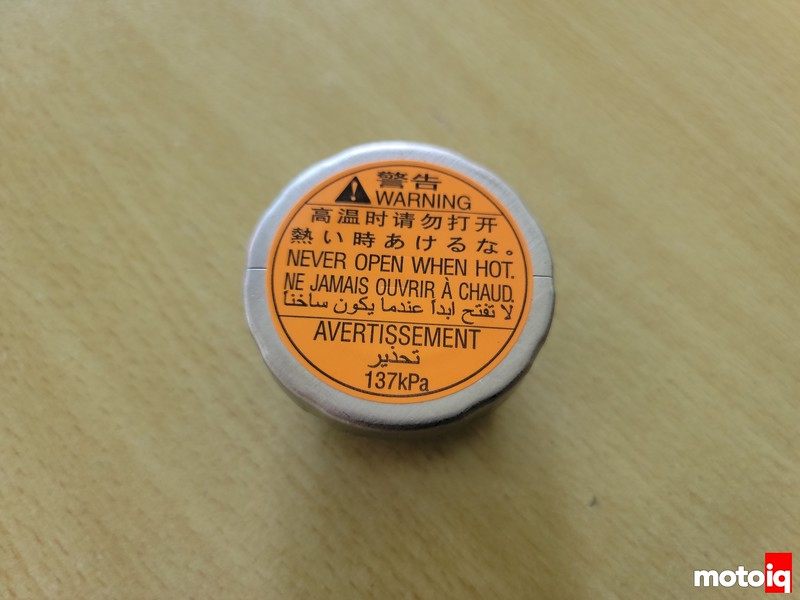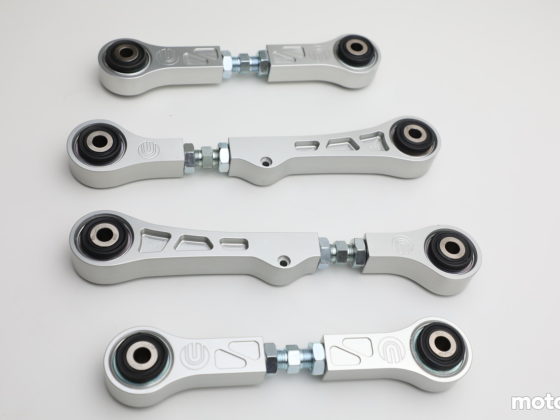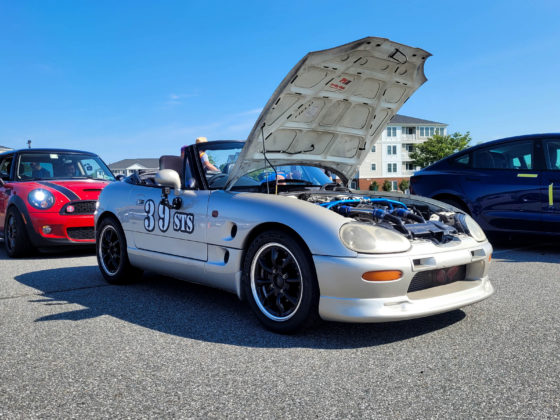
Having an incorrect radiator cap on a turbo EJ Subaru is a critical mistake that even seasoned Subaru builders, including us have made. In fact, one of our sharp-eyed readers brought this to our attention when he was looking at one of our articles. The fact that most high-performance radiators for Subarus come with high-pressure caps makes this issue even worse. The problem is that the OEM radiator cap is a round one with no ears and we found that it’s important for this cap to be on the radiator, not the high-pressure cap that came on your performance radiator!

The round earless OEM cap has a unique feature, instead of the typical two-way pressure relief valve that comes on radiators, the OEM cap has a one-way check valve.

The OEM cap with the one-way check valve is pictured here on top, and the performance high-pressure two-way cap that came on our CSF radiator is on the bottom. You can see the difference in the valves here. A two-way cap is used on most cars so as the coolant expands with heat, the valve opens and lets coolant flow into the catch can. When the engine cools down, the valve opens and lets the coolant returns to the radiator. This helps keep some air out of the system and keeps the coolant level more consistent.

Normally a two-way cap is used on the radiator and this is how our car was. However, on a Subaru, you have a circulating expansion tank above the radiator. This is to help ensure that all the air is bled out of the system and is a great OEM feature. We convert most race cars we build to this sort of system for the same reason.




35 comments
I remember commenting on it either on here or IG. I hope it was me! hahaha
It was you!
“Cool”, I’m going to brag to my friends. “Rad” article lol. Glad to have helped and thanks for the shout-out!
Thanks for pointing it out or I never would have looked into it!
Very interesting! I am sure this would get overlooked many times, by many people.
Oh! I had kept the round cap on my rad but I never knew that it was one-way, neat.
Thanks for sharing. I’m upgrading my radiator soon and now I know to keep that cap.
I spent 5 years as a certified Subaru tech and this was never explained to me. We were told not to mix them up but never given a reasoning. I even remember an instructor shrugging his shoulders in class when someone asked why!
Huh, the EJ uses that upper coolant reservoir as a degas bottle. Interesting.
Yeah, it’s like a swirl pot.
OMG, I’ve been struggling with air stuck in my cooling system (gurgling noise when I accelerate and no head gasket failure symptoms). I was having to repeatedly burp the system every couple weeks. After reading this article, I immediately went to my ’04 WRX and saw that I had the same two “eared” radiator caps on both the expansion tank and radiator. I just bought a round cap and am crossing my fingers that this’ll stop the entrapped air bubble issues that I’ve been dealing with.
Thanks for spreading the good word!
I wonder how many head gasket failures are a result of this.
Took the words right out of my mouth.
Oh that’s crazy Flatirons Tuning did a video on this a while back.
https://youtu.be/HzjBJz1Zdmw
I was seriously wondering about those caps the other day during a junkyard run. This is really timely advice!
Is this EJ specific?
2015 Forester with FA20DIT came with a two-eared cap from the factory.
Does it have the check valve in it?
I don’t know. My forester is in the body shop or I would have checked.
My point is, the caps shape isn’t an indication of whether it is correct for the application as the statement “The problem is that the OEM radiator cap is a round one with no ears and we found that it’s important for this cap to be on the radiator” suggests.
A round cap is not OEM on a 2015 Forester XT with FA20DIT.
Reference https://parts.subaru.com/p/Subaru_2015_Forester-20L-CVT-XT-Touring-wEyeSight/Radiator-Cap-Radiator-Cap/49251972/45137AE003.html
From looking at images of the 2015 Forester engine compartment, it appears not to have a high-mounted pressurized surge/deaeration tank like an EJ, the cap leads to a conventional overflow reservoir so it doesn’t have this sort of cap.
That’s why I asked if this article was specific to the EJ. That much wasn’t clear in the article.
So the information here isn’t applicable to 15+ WRX and 15-18 FXT and owners of these shouldn’t go searching for round radiator caps.
I did an edit to address your concern. Thank you for pointing that out.
Mike,
The stock round cap should be a higher pressure than the expansion tank. At a lower pressure it is opening before the expansion. Which isn’t functioning as designed.
The OE round cap is on the stock plastic radiator as a fill port and failsafe if the expansion cap stops working. Failsafe will avoid plastic end tanks exploding.
We switch to a solid cap on aluminum radiators, this allows the system to pressurize to the desired expansion tank cap pressure instead of maxing out at 137kPa of the stock 1 way round cap.
Glad you’re spreading the word as this is commonly ignored.
So I’m sorry I am so confused I have a 2002 Subaru Forester l so what cap do I put on because I just took off the one with the Chinese writing and I just put on another round one which they said AutoZone said that this is the one to you so which one is the correct one
I wouldn’t take advice from an AutoZone employee. I wouldn’t use Chinese parts either. Get the right parts from Subaru or Flatirons.
what about the STI rad cap from black hawk Japan? i purchased one along with the oil cap. Also, I noticed coolant everywhere in my e-bay, but no leaks and rad temp is between 195 – 220. is my rad going bad? how do you recommend i check my radiator?
Do a pressure check
More worries on my 2006 sti
One other thing I’ve observed, if the OEM Cap is not fully seated, oriented (warning triangle symbol) pointed exactly towards windshield, the pressure in the system will not activate the “check valve” properly in the cap and the result is coolant blowback thru the expansion hose where it passively(no clamps) T’s back to the radiator and overflow tank. The system will actually force coolant out of the passively connected T connection. It sometimes gives the appearance the radiator is leaking between the upper/lower radiator tanks. Something to be aware of. The coolant “leakage” happens mostly during the cool down process btw. The cap is on tight enough to hold system pressure but not oriented to the point where the valve functions properly. hopefully this makes sense.
I’m confused so what you are saying in the article just so I get this right.. the 137psi round goes on the Expansion Tank? And the eared 108psi on the radiator… sooo in other words swap them around.. is that correct..
I other articles it says don’t do this!!! And on the subaru.org suggest use 108psi eared on both tanks… that’s three different opinions… now I’m really confused!!!!!!
Our way is correct of course. Although we don’t use 137 psi and 108 psi caps.
Im a bit confused as to why there is an issue with the CSF cap on the radiator. The cap says it’s rated for 20lbs which roughly converts to about 137.8kpa. Almost the same pressure as the OEM round cap. Can someone explain more why there CSF cap is a problem on the radiator? If I put the CSF cap on the expansion tank and the round OEM cap on the radiator, then that would mean the pressure on the expansion tank is now going up to 137.8kpa instead of the 108kpa which the system was designed for. Is this really the correct approach?
Yes, the function of the round cap is a one way valve to purge air.
So should I removed the koyorad cap that came with my koyorad radiator and swap it with the oem one?
Put the round one on the radiator and the Koyo on the surge tank
I installed a Koyorad radiator a few years ago and replaced the cap that came with it with an EOM ‘non-eared’ cap from the dealership (about $20). My expansion tank still has the factory ‘eared’ cap on it. ’05 Outback XT. I would recommend OEM for both caps if you can.